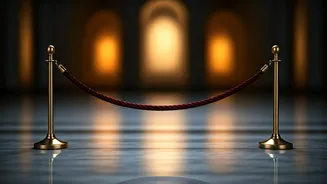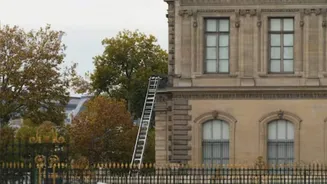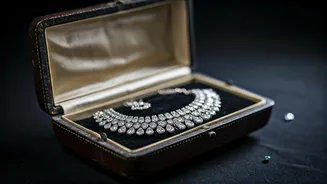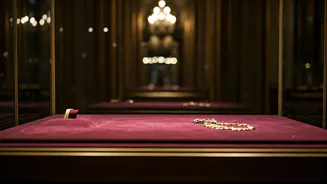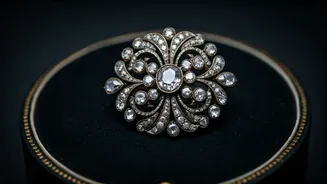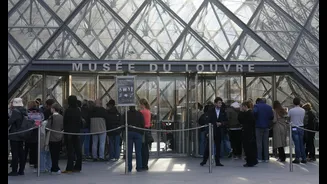The Initial Capture
The origin of the viral sensation lies in a photograph taken by Associated Press photographer Thibault Camus, who was present at the Louvre after the crown
jewels heist. The image depicted a stylishly dressed man walking past uniformed French police officers, with their vehicle blocking an entrance. Camus, reflecting on the moment, mentioned the photograph wasn't particularly striking, noting that someone's shoulder partially obscured the foreground. The photographer's focus, at the time, was simply capturing the scene. The caption merely identified the scene as occurring after a robbery, without revealing any details about the unidentified man. However, the photograph’s potential was not yet realized at the time, as it was just a snapshot of an event at the scene.
Fueling the Rumors
Once the photo reached the public, fertile imaginations ran wild, turning the image into a catalyst for an online frenzy. The well-dressed man was quickly cast as a French detective, with social media users comparing him to a dashing Inspector Clouseau. One post, boasting 5.6 million views, boldly declared it an actual shot of a detective investigating the crime. Another poster with 1.2 million followers also claimed he was a detective investigating the theft. The initial photo's anonymity allowed the image to take on different meanings. The image was transformed from a simple documentation of an event into a symbol of intrigue and speculation. The absence of specific information and the visual cues in the photo, especially the man's attire, gave the image a unique ability to spark a narrative.
The Photographer's Perspective
Camus himself, the photographer, did not recognize the man as a detective or a key player in the investigation. According to Camus, the man simply walked away from the Louvre as authorities evacuated the area. Furthermore, Camus noted the man's unusually elegant attire, which included a coat, jacket, tie, and fedora. This fashionable appearance, typical of Parisian couture, served as a compelling contrast to the chaos of the police presence. Camus's perspective offers a more grounded account, contrasting the speculations created by social media. His observation provides an important reminder that perception and reality can often diverge, especially in the context of a sensational event and its online reception.
Official Response and Intrigue
The Paris prosecutor's office fueled the mystery further by responding to inquiries with a playful wink, choosing to keep the mystery alive. This response only increased the speculation surrounding the man's identity. The decision not to provide definitive information ensured that the narrative would persist and likely evolve over time. The playful response from authorities served to further engage the public. This approach allowed the photo, and the assumptions that it generated, to continue to captivate the public’s imagination. With the authorities keeping it hush-hush, the public was left to come up with its conclusions.
